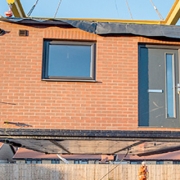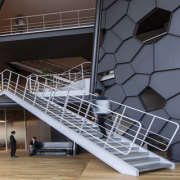Applications open for new £1.2bn framework for Modern Methods of Construction of public sector homes
Specialist contractors can now apply to join a new £1.2bn framework to deliver offsite- constructed homes that will provide thousands of homes to benefit communities across the UK.
The new NH3 (Modern Methods of Construction (MMC) of New Homes) framework from public sector construction framework provider LHC will operate across England, Scotland and Wales, delivered through LHC London and South East (LSE), Scottish Procurement Alliance (SPA), South West Procurement Alliance (SWPA), Consortium Procurement Construction (CPC) and Welsh Procurement Alliance (WPA).
The framework, which replaces NH2, will address some of the new housing challenges within the public sector at a time of high demand and increasing emphasis on the need for sustainable methods of construction and a greater supply of housing stock that is environmentally fit for the future.
Aiding the construction of a range of different housing types, NH3 covers low-rise and medium/high-rise dwellings through to specialist accommodation such as care homes. It will support public sector procurers to increase the use of modern methods of construction in their contracts and help to deliver low and net zero carbon homes with high levels of pre-manufactured value.
The framework will also create the opportunity for procurement teams to access a wider range of MMC solutions and suppliers, encouraging greater collaboration between suppliers and clients.
Dean Fazackerley, head of technical procurement at LHC, said:
“The NH3 framework will build on the success of NH2, which has so far enabled £93.5m-worth of projects with a total forecast value of £277m. It has contributed to the number of low-carbon, modern apartments and homes for housing associations and local authorities across the country, using modern methods of construction and offsite techniques to produce cheaper-to-heat homes for the communities they serve.”
Developments so far procured or delivered through NH2 include 400 units, currently being built across a four-year period by modular offsite construction specialists Rollalong, for Magna Housing Association and Wiltshire Council in the South West. In the London Borough of Bromley, the framework has also been used to deliver 25 one and two bedroom affordable apartments, as part of the ‘Bromley Homes for Bromley People’ programme. Among the environmental features incorporated in the build from Module-AR are PV panels and herb gardens.
Finally, NH2 has also delivered the award-winning Hope Rise scheme in Bristol, where 11 affordable, low-carbon apartments from Zed PODS have been installed as permanent living spaces for young workers and vulnerable households.
Dean Fazackerley added:
“NH3 will initially cover a range of MMC categories and features four distinct workstreams we hope will encourage both manufacturers and those that can deliver main contractor services for MMC to apply. We also hope SMEs will apply and take advantage of the opportunities available to them through this new framework.”
The four workstreams covered by the NH3 framework are:
- Workstream 1 – Three-dimensional (3d) modular systems – category 1
- Workstream 2 – Two-dimensional (2d) panelised systems – category 2
- Workstream 3 – Main contractors delivering MMC solutions
- Workstream 4 – Groundworks and site preparation for MMC housing projects









